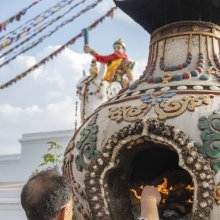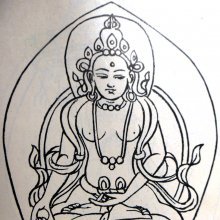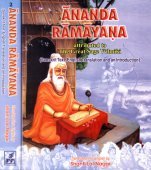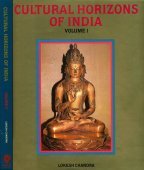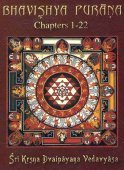Flag: 3 definitions
Introduction:
Flag means something in Buddhism, Pali, Hinduism, Sanskrit, the history of ancient India. If you want to know the exact meaning, history, etymology or English translation of this term then check out the descriptions on this page. Add your comment or reference to a book if you want to contribute to this summary article.
Images (photo gallery)
(+13 more images available)
In Hinduism
Natyashastra (theatrics and dramaturgy)
Source: Shodhganga: Elements of Art and Architecture in the Trtiyakhanda of the Visnudharmottarapurana (natya)The Flag (or Banner) is denoted by the Sanskrit term Patāka, whereas Patākahasta refers one of the twenty-two Single-hand Gestures (in Indian Dramas) (known as asaṃyuktahastas), according to the Viṣṇudharmottarapurāṇa, an ancient Sanskrit text which (being encyclopedic in nature) deals with a variety of cultural topics such as arts, architecture, music, grammar and astronomy.—The word patāka indicates dhvaja in Sanskrit which means flag or banner. According to the Viṣṇudharmottarapurāṇa in patāka-hasta, all the fingers are straightened and thumb is bent. Abhinavagupta comments in the Abhinavabhāratī that this hand posture is looked like a flag and that is why it is named as patāka. The Viṣṇudharmottarapurāṇa states that the dancer uses the patāka-hasta to obstruct prahāra i.e., strike or beat in a Dance performance. Moreover, to show the blowing of wind and raining, this hand posture is used in Dance. Sometimes eagerness is also denoted with this hand posture.

Natyashastra (नाट्यशास्त्र, nāṭyaśāstra) refers to both the ancient Indian tradition (shastra) of performing arts, (natya—theatrics, drama, dance, music), as well as the name of a Sanskrit work dealing with these subjects. It also teaches the rules for composing Dramatic plays (nataka), construction and performance of Theater, and Poetic works (kavya).
In Buddhism
Mahayana (major branch of Buddhism)
Source: Brill: Śaivism and the Tantric Traditions (mahayana)Flags are used as a material in the performance of a sacred bathing ritual dedicated to Goddess Sarasvatī, according to the seventh chapter of the Suvarṇaprabhāsottamasūtra.—In chapter 7, the Sarasvatīparivarta, the goddess Sarasvatī grants her support to the Dharma preacher through the gift of eloquence, and presents a bathing ritual with enchanted herbs for him and his audience in order to appease all disturbances. It is promised that, invoked by praise, Sarasvatī herself will appear and remove all diseases and difficulties. The ritual instructions prescribe that one should pound herbs and consecrate the powder with mantras at the time of the Puṣya constellation. A maṇḍala should be drawn with cow-dung, flowers should be scattered and gold and silver vessels filled. Four armed men and four well-adorned maidens should be placed there holding pots in their hands, thus accomplishing the protective sealing of the boundaries (sīmābandha). One should use incense, music, umbrellas, flags, banners, mirrors, arrows, spears and dhāraṇī-spells, and in due course bathe behind an image of the Buddha.

Mahayana (महायान, mahāyāna) is a major branch of Buddhism focusing on the path of a Bodhisattva (spiritual aspirants/ enlightened beings). Extant literature is vast and primarely composed in the Sanskrit language. There are many sūtras of which some of the earliest are the various Prajñāpāramitā sūtras.
India history and geography
Source: Singhi Jain Series: Ratnaprabha-suri’s Kuvalayamala-katha (history)Flags commonly decorated the Vimānas (temple complex) of ancient India, as vividly depicted in the Kathās (narrative poems) such as Uddyotanasūri in his 8th-century Kuvalayamālā (a Prakrit Campū, similar to Kāvya poetry).—Page 92.24-31: A Devī-vimāna is described as being decorated with rubies, pearls-pendants and festoons, rows of bells attached to banners, rows of vaijayantī flags fixed on the top, lotus-medallions formed by the inset work of rubies, figures of the lotus-pond and thus giving appearance of Padma-vimāna. [...]

The history of India traces the identification of countries, villages, towns and other regions of India, as well as mythology, zoology, royal dynasties, rulers, tribes, local festivities and traditions and regional languages. Ancient India enjoyed religious freedom and encourages the path of Dharma, a concept common to Buddhism, Hinduism, and Jainism.
See also (Relevant definitions)
Starts with: Flag root, Flagellaria indica.
Ends with: Blue flag, Corn flag, Grass-leaved sweet flag, Harlequin blueflag, Japanese sweet flag, Morning flag, Myrtle flag, Rock sweet flag, Southern blue flag, Sweet flag, Western blue flag, Yellow flag.
Full-text (+740): Dhvaja, Pataka, Ketu, Patakin, Vaijayanta, Vaijayantika, Ketuyashti, Dhvajastambha, Suradhvaja, Ketana, Dhvajarohana, Kodi, Jayapataka, Shakradhvaja, Dhvajayashti, Patakamshuka, Dhvajaropana, Alpakeshi, Grihayantra, Vyomamanjara.
Relevant text
Search found 178 books and stories containing Flag; (plurals include: Flags). You can also click to the full overview containing English textual excerpts. Below are direct links for the most relevant articles:
Significance of the Moon in Ancient Civilizations (by Radhakrishnan. P)
16. The Moon and National Flags < [Chapter 3 - History of Civilizations and Moon]
5. Iconography of Moon < [Chapter 2 - A Sceintific Outlook on Astrology]
15. The Anceint Pagan Moon Worship < [Chapter 3 - History of Civilizations and Moon]
Warfare and Military System in Vedic Literature (by Rinki Deka)
War-Flag (in the battlefield) < [Chapter 4 - Principles and Ethics related to the Warfare]
Winning the Battle and the Principles thereof < [Chapter 4 - Principles and Ethics related to the Warfare]
The Skanda Purana (by G. V. Tagare)
Chapter 16 - Tāraka and Devendra Prepare for War < [Section 2 - Kaumārikā-khaṇḍa]
Chapter 294 - Greatness of Ajogandheśvara (Ajogandha-īśvara) < [Section 1 - Prabhāsa-kṣetra-māhātmya]
Chapter 31 - Taking the look of Dvārāvat as an idol < [Section 4 - Dvārakā-māhātmya]
Mahabharata (English) (by Kisari Mohan Ganguli)
Section CCXXVII < [Khandava-daha Parva]
Section LV < [Goharana Parva]
Section XVII < [Arjunabhigamana Parva]
The Architect of Indian National Flag < [July – September, 2003]
Nehru and China < [October 1987 – March 1989]
The Triple Stream, August 15, 1948 Editorial < [October – December, 2006]
Ramayana of Valmiki (by Hari Prasad Shastri)
Chapter 96 - Shri Rama and Sita see the army approaching < [Book 2 - Ayodhya-kanda]
Chapter 7 - Shri Rama’s coming installation < [Book 2 - Ayodhya-kanda]
Chapter 109 - The Fluctuations of Combat < [Book 6 - Yuddha-kanda]
Related products


